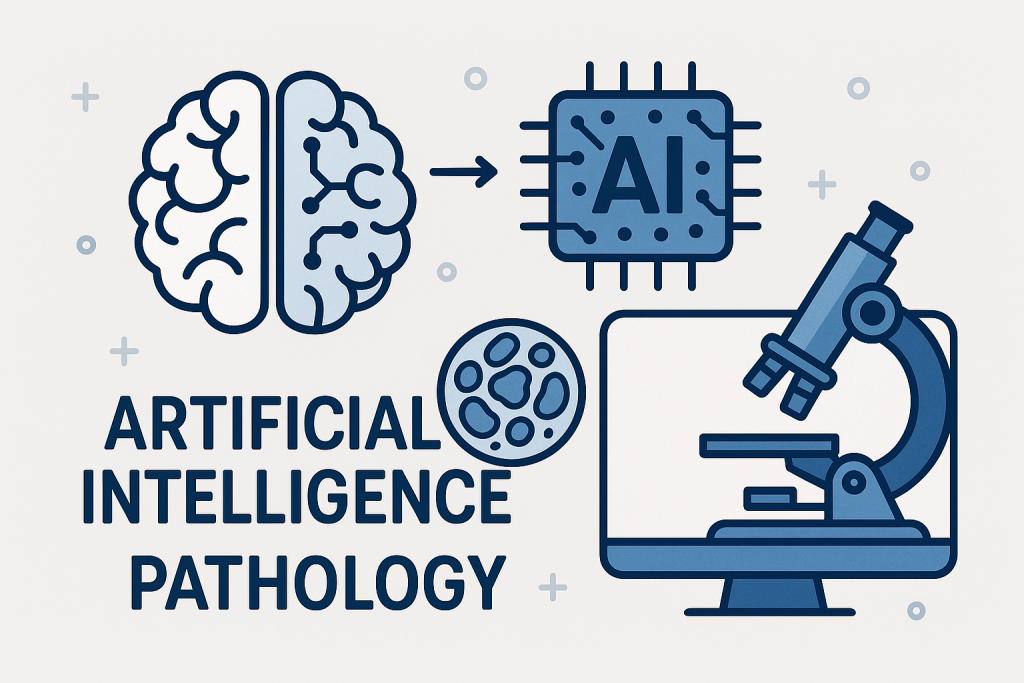Revolutionizing Diagnostic Medicine
In the last several years, Artificial Intelligence (AI) has been transforming industries left and right, and one of the most potential sectors it is revolutionizing is pathology. Pathology, often termed the cornerstone of diagnostic medicine, is the microscopic examination of tissues, cells, and body fluids for disease identification. With mounting pressure for accurate, efficient, and scalable diagnostic services, AI has emerged as a lifesaver.
Why Pathology Needs AI
Traditional pathology practice relies heavily on human expertise, where pathologists look at tissue samples under a microscope for abnormalities. While highly effective, the process is:
- Time-consuming
- Subject to human error
- Limited by the number of available trained specialists
Also, with aging populations and increasing healthcare needs, pathology departments have come under increasing pressure. Enter AI — with its ability to handle large volumes of data quickly and with consistency — offering an effective solution.
Main Uses of AI in Pathology
- Digital Image Analysis
AI-powered algorithms can be employed to examine digital pathology slides to identify patterns, quantify tissue elements, and spot abnormalities with high accuracy. This enables:
- Faster diagnosis
- Improved accuracy
- Reduced inter-observer variability
2. Cancer Detection and Grading
AI algorithms that have been trained on thousands of annotated images can detect breast, prostate, and lung cancers with accuracy. AI can also assist in grading tumors, a critical step in treatment planning.
3. Workflow Optimization
AI can prioritize urgent cases by flagging abnormal samples, thereby enabling pathologists to focus on the most critical cases first. This optimizes workflow and decreases report turnaround times.
4. Predictive and Prognostic Insights
Advanced AI platforms can also go beyond detection. They can link histopathological features to genomic data and clinical outcomes to predict disease progression or treatment response.
5. Educational Tools and Decision Support
AI-based applications are excellent educational tools for residents and medical students. For practicing pathologists, AI may serve as a second opinion to validate or argue difficult diagnoses.
Advantages of AI Adoption in Pathology
- Consistency: AI systems are reproducible with no subjective variability.
- Scalability: Large volumes of slides can be interpreted speedily, even in remote or resource-scarce locations.
- Early Diagnosis: AI can identify subtle alterations that may not be apparent to the human eye, enabling earlier interventions.
- Cost-effectiveness: AI, in the long term, can help reduce the cost of diagnosis by automating procedures and minimizing errors.
Challenges and Considerations
For all its potential, the application of AI in pathology does not come without challenges:
- Data Privacy: Patient data must be handled with strict compliance to privacy laws.
- Validation and Regulation: AI algorithms need to be strictly validated to be clinically reliable.
- Integration with Existing Systems: Easy integration with hospital IT systems is paramount to adoption.
- Trust and Acceptance: Pathologists need to be trained and engaged in AI development for trust and adoption to happen.
The Future of AI in Pathology
The future is promising. With AI, big data, and cloud computing coming together, we are heading toward augmented pathology, where humans and machines work together in perfect harmony. This collaboration can open up greater insights into disease, improve the accuracy of diagnoses, and tailor treatment to individual patients like never before.
Conclusion
AI pathology is not about replacing pathologists but enhancing them. By assuming routine and repetitive tasks, AI frees up experts to focus on complex and nuanced decision-making. As technology continues to evolve, AI will be a precious ally in the fight against disease — transforming how we diagnose, treat, and ultimately understand health and disease.

